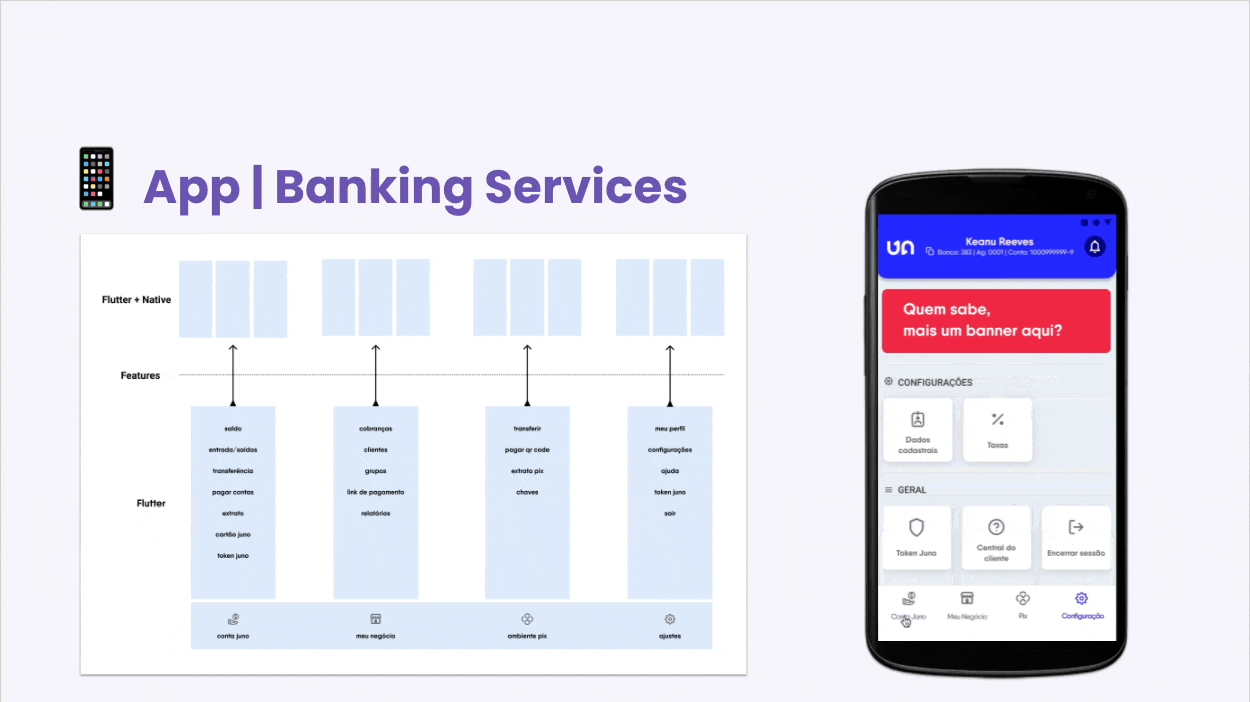
Changing EBANX's approach to SMB through design and research
1. Context & The Business Challenge
Following EBANX's acquisition of Juno, the board established two core 2021 objectives:
Grow the active user base.
Increase Juno's revenue.
Their initial hypothesis was to launch a suite of premium features (e.g., invoicing, BI tools, premium support) under a subscription model to drive this growth.
2. Identifying the Strategic Misalignment
Upon analyzing this directive, I identified a critical risk: the hypothesis was not user-informed. Juno's users had never paid for the service; a subscription model was unlikely to succeed without first delivering core value.
I partnered with my Design Manager and Product Manager to advocate for a two-week research sprint. We secured buy-in from the Product Director to validate or challenge the board's assumption before committing significant engineering resources.
3. Uncovering the Core Insight: Leadership Through Research
I led qualitative and quantitative research with active and potential users, synthesizing the findings into a compelling report for leadership. The data was clear:
Users were not willing to pay for a subscription for the proposed features.
The fundamental demand was for a reliable, practical digital account with robust baseline banking services and trustworthy payment tools—a need not being met by the market.
This research provided the evidence needed to pivot the company's strategy entirely.
4. The New Strategy: Defining a Vision
Armed with user insights, we pitched and secured approval for a new product vision: to build the best digital account in Brazil for small and micro-businesses. This new direction was anchored on three pillars:
A strong, reliable baseline banking service.
An excellent and complete payment platform.
A focused pursuit of the SMB audience.
5. Execution: A Cohesive Action Plan
My role evolved to define the experience architecture across platforms:
Web (Payments Platform): I overhauled the 4-year-old platform's information architecture and established a scalable design language to support future growth, moving away from an unsustainable "add feature to menu" model.
Mobile (Banking Services): I designed a new navigation architecture (tab bar) to seamlessly bridge native and Flutter components, creating a coherent user journey and an informational hub for business insights. This was critical while engineering worked to resolve technical debt and performance issues.
This process was continuously aligned with Risk, Compliance, and CX teams to ensure feasibility and user-centricity.
6. Measurable Impact & Strategic Influence
The initiatives I led and designed had a direct and measurable impact on business goals:
Drove a 20% growth in MAU (from 25k to 30k) in subsequent quarters by focusing on core user needs.
Prevented potential wasted investment in a costly-to-build subscription model that research showed would have failed.
Elevated Design & Research: Established a new, data-informed product development rhythm. A Definition of Done (DoD) now includes tracking plans, and design is a key stakeholder in all new initiatives.
Enhanced Product Resilience: The work directly contributed to reducing operational risk and improving technical scalability and security.


